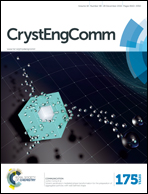An oxidation layer for regulating galvanically grown silver nanoparticles on silicon crystal for highly sensitive surface-enhanced Raman scattering measurements
Abstract
In this study, a new method was developed in which an oxidation layer is used to regulate the morphology of silver nanoparticles (AgNPs) formed on Si crystals during galvanic displacement (GD). Using an oxidation layer yielded reproducible and stable AgNPs@Si substrates for sensitive surface-enhanced Raman scattering (SERS) measurements. The estimated SERS enhancement was at least an order of magnitude greater than for substrates prepared using a conventional GD method. The formation of Si–O− on the Si surface increased the adsorption of the AgNPs. Highly reproducible results were obtained, with a relative standard deviation of approximately 5%. To investigate the role of the oxidation layer and to optimize the reaction conditions, the oxidation layer thickness and chemical composition of the reaction solution were adjusted. The degree of aggregation in AgNP formation was mainly controlled by the thickness of the oxidation layer, whereas the size of the AgNPs was affected by both the concentration of AgNO3 and hydrofluoric acid in the reaction solution and the GD reaction time. When the optimized reaction conditions were used, the AgNPs@Si substrate had an enhancement factor of >107.


 Please wait while we load your content...
Please wait while we load your content...